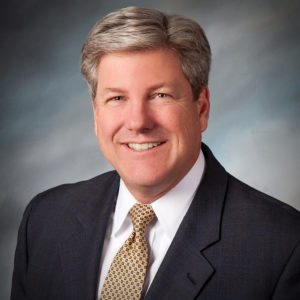Bob Veres, Editor and Publisher at Inside Information, notes with dissatisfaction that CFP Board’s letter fails to mention fiduciary status. He then questions the omission, especially after CFPB spent so much ink to ‘trumpet’ that CFP = fiduciary. Veres cites his and Knut’s “kind of a long back and forth” of emails where Knut argued, among other things, that CFPB has a duty, to consumers and CFPs, to provide meaningful guidance on what fiduciary means so that CFPs can do what CFPB says they do. The current paucity of such guidance is startling after 12 years. It is also not refuted. Critically, initial remedial steps can be taken quickly.
Hooray! Hooray! The CFP Board has released a model client engagement letter that CFP advisors can use with their clients, which outlines in some detail the nature of the engagement and the standards that the advisor will be held to while working with the client.
You can find the letter here: (https://www.cfp.net/ethics/compliance-resources/2020/11/sample-engagement-letters-for-financial-planning-and-financial-advice) It points the client to the advisor’s Form CRS and Form ADV, and outlines the services and “products” (?) that will be provided by the planning firm: cash flow planning; investment planning; retirement planning; and estate, gift and wealth transfer planning.
The letter lists the seven steps of the planning process as defined in the CFP Board’s Code of Ethics and Standards of Conduct, and talks about selecting an appropriate custodian and providing timely performance reporting on assets managed. It offers a fee disclosure, which (alas, as you’ll see shortly) describes an AUM arrangement with the fees stepping down over various thresholds. It discloses a couple of conflicts of interests (The amount I earn from working with you depends, in part, on the amount of assets I manage for you…) and lists some responsibilities that exist on the part of the client.
At the end, there are links to the SEC and CFP Board websites which might reveal any regulatory history that consumers might want to know about.
The alert reader will have already noticed that I gave the CFP Board two cheers rather than the usual three for this disclosure document. Why withhold the third cheer?
Because there is no mention of a fiduciary standard, anywhere in the document. I found myself scratching my head. Aren’t CFP advisors required to hold themselves to a fiduciary standard? Doesn’t the CFP Board, in its advertisements, trumpet the fact that people who hold the designation are required to act as fiduciaries?
So the question becomes: what should we add to this document? To answer that, we need to ask ourselves, what, exactly, does it mean to be a fiduciary?
After kind of a long back-and-forth, I have been convinced by Knut Rostad, President of the Institute for the Fiduciary Standard , that the CFP Board, itself, could do a much better job of defining what we mean by fiduciary standards of behavior. This client agreement is just one more piece of evidence for this curious shyness on the part of the CFP Board.
I agree with Rostad that the definition of ‘fiduciary’ that we typically trot out—“put the clients’ interests ahead of our own,” is insufficient because it is not nearly specific enough. It’s a decent start, but today we have brokers and people who sell annuities claiming that they’re fiduciaries, because they believe their recommendations are in the best interests of their customers—and I would argue that their behavior falls short of a fiduciary standard.
The brokerage industry has argued that we can get by with disclosure of conflicts, rather than avoidance of them. If people actually read the disclosures, I might agree. In this actual world we live in, I think disclosures are a cynical way around the fiduciary standards of behavior.
What’s better? Interestingly, the idea of a fiduciary is found all the way back in the Code of Hammurabi, which was written in 1754 BC. The relevant texts focus on a kind of brutal enforcement of a person’s ability to trust someone else who is temporarily handling his/her assets:
- Item 112: If any one be on a journey and entrust silver, gold, precious stones, or any movable property to another, and wish to recover it from him; if the latter do not bring all of the property to the appointed place, but appropriate it to his own use, then shall this man, who did not bring the property to hand it over, be convicted, and he shall pay fivefold for all that had been entrusted to him.
- Item 113: If any one have consignment of corn or money, and he take from the granary or box without the knowledge of the owner, then shall he who took corn without the knowledge of the owner out of the granary or money out of the box be legally convicted, and repay the corn he has taken. And he shall lose whatever commission was paid to him, or due him.
- Item 120: If any one store corn for safe keeping in another person’s house, and any harm happen to the corn in storage, or if the owner of the house open the granary and take some of the corn, or if especially he deny that the corn was stored in his house: then the owner of the corn shall claim his corn before God (on oath), and the owner of the house shall pay its owner for all of the corn that he took.
- Item 264: If a herdsman, to whom cattle or sheep have been entrusted for watching over, and who has received his wages as agreed upon, and is satisfied, diminish the number of the cattle or sheep, or make the increase by birth less, he shall make good the increase or profit which was lost in the terms of settlement.
- Item 265: If a herdsman, to whose care cattle or sheep have been entrusted, be guilty of fraud and make false returns of the natural increase, or sell them for money, then shall he be convicted and pay the owner ten times the loss.
Notice that there are no provisions for “disclosure” of conflicts, where the owner of property entrusted to another signs a waiver saying that maybe the items will be lost or stolen while the other person has possession. The brokerage firms would have had a hard time doing business as usual in ancient Babylon.
You find a broader idea of fiduciary in the medieval Japanese culture, a strong thread of which survives today in the idea of maintaining your honor in business dealings. If a medieval Japanese samurai was found to have harmed others or society through ethical lapses, or behaved in a shameful way by benefiting himself over others, he was expected to ritualistically end his life. (Commit seppuku.) That may seem a big extreme to Western eyes, and ritual suicide probably should be left out of the CFP Board’s sample document, but the concept of maintaining your honor is actually pretty strong among many financial planning firms.
Once again, disclosure is not an excuse. If we had a bit more of this kind of culture in the U.S., a bunch of brokerage industry executives would have bloodied the carpet in their offices using sharp ritual swords.
We want to be careful about loading any fiduciary definition with specifics, because we don’t want to turn a principles-based regulation into a set of rules. But I think there are some clear guidelines that we could offer.
First, the sample document might tell the client that the firm will avoid conflicts of interest as much as humanly possible. Taking compensation for advice could be considered a conflict; that one is hard to avoid, so I would disclose it. But what about commissions—having the product manufacturer pay you to recommend its products?
I have, in the past, argued that advisory firms that take commissions cannot be considered fiduciaries—and the only successful pushback I’ve gotten is where firms recommend term life and take small commissions, and rebate them against their fees. But today there are no-commission term life policies, which would seem to eliminate that exemption. Could the document specify that the firm will not accept commission-based or third-party revenue?
What about brokers who gather assets for their company’s asset management platform, or for the separate accounts that pay their company a shelf space payment (disguised as revenue-sharing)? If we’re going to protect the public from predators, I think it would be necessary to impose a strict fiduciary standard here, and to require all compensation to be received directly from the client, not have the client pay the brokerage firm, which then pays a share of that to the broker. And I would especially view any variable compensation (the broker gets more for recommending these products than those) as a breach of fiduciary duty.
The goal is to finally, irrevocably, separate advice from sales. My recommendation there is not to change the disclosure document, but to require those who hold the CFP designation to accept only compensation paid directly by the client. If you’re unwilling to do that, give up the mark.
Giving advice where you don’t have the training or expertise is another obvious conflict. You don’t want to give the client a recommendation to a professional because you want to gather all the fees or fear the other professional might steal the client relationship. I would argue that failure to recommend outside experts where appropriate is a breach of the fiduciary standard.
The disclosure document might be reworded to assure clients that, if a complicated issue arises outside the expertise of the firm, that the firm will recommend an outside expert in that area.
Finally, I think the profession is going to have to address the assets-under-management compensation structure, and recognize that AUM-compensated advisors are embracing unnecessary conflicts of interest. I ran into this myself when I went to visit a prominent financial planning firm, and wanted advice on some of my business arrangements. The advisor immediately wanted to see my account statements, and after burying his nose in my retirement accounts, recommended that I turn that money over to his management.
I timidly mentioned that I was looking for business advice, not asset management, but the planner simply would not let go of a focus on my assets, and eventually made managing them a condition of our relationship.
Of course, there are a variety of other conflicts embedded in the AUM revenue model, and you know what they are. My point is that these conflicts are seldom disclosed and even less often are they avoided by today’s planning profession. A strict fiduciary standard would at least require disclosure. At best, it would require a revenue model that is directly tied to the advice given, regardless of the assets that the client brings to the table.
This would be a tough one for the CFP Board to address, but at the very least the sample client agreement should not automatically assume that the advisory firm is compensated by AUM. And if the firm’s revenue model IS AUM, then I would like the CFP Board to include a sample disclosure of the various conflicts this entails. Is there anything I’ve left out? I send these messages out to my audience in hopes that you will see things that I’ve missed, and you will educate me about my shortcomings. What else is needed in the client agreement, or more broadly in our bigger, more encompassing definition of ‘fiduciary?’ Together, we might help the CFP Board unravel some of the complexities around a true professional engagement.

